Through Tree Planting Pit Design
The long hot summer of 2018 is still very much on our minds, and at GreenBlue Urban we have been studying the implications of such weather patterns on urban trees. What trees did well? Which failed to survive and reach the autumn – and why?
Very useful work has already been done regarding species selection, for example the TDAG’s Species Selection Guide compiled by Dr Andrew Hirons of Myerscough University, and Dr Henrik Sjöman.
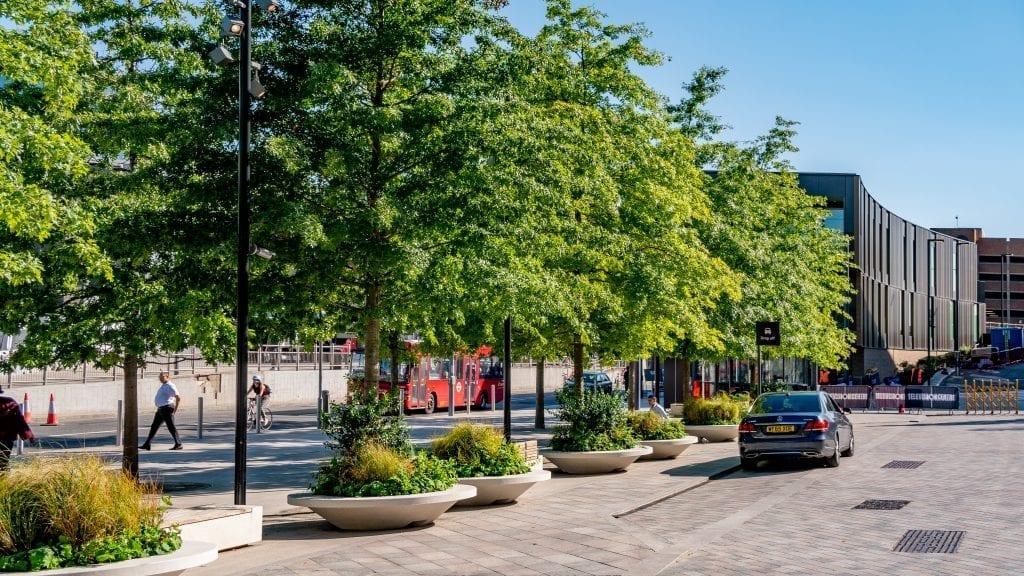
Rather than looking at specific species, this article talks about planting pit design. Getting this right will not only help enhance drought tolerance, but will also ensure the longevity and maturity of our new urban tree plantings so that our descendants can enjoy treed streets with canopy cover, shady parking, urban cooling, pollution removal, and the many other benefits that healthy urban trees offer.
2018 gave us an excellent opportunity to get out and study what works in real situations when the climate heats up. This is just an example of what we found, but is also typical of other installations visited.
Cobham Service Area – M25 Motorway, Surrey, UK
Cobham is a large highway service centre serving thousands of commuters every day. From an urban tree perspective, it gave us the opportunity to compare trees planted at the same time in 2012, but in different scenarios – soft landscape and continuous paved surround.
In theory, and according to precedent, trees in soft landscape areas significantly outperform trees in the traditional meter cubed (4ft x 4ft) planting pits, by a considerable margin. This is due to the higher uncompacted soil availability and more natural root spread soft landscape allows. However, these were not typical urban planting pits. The trees at Cobham Service Area were planted in root managed tree pits, guiding the roots into GreenBlue Urban soil cells beneath the hardscape surrounding.
The result of this planting pit design strategy is very marked. By the end of the 2018 summer, most trees in grass areas were showing significant drought stress and structural die back. By contrast and almost without exception, the trees in soil cells and surrounded by hardscape exhibited excellent new shoot extension and leaf turgor. The trees in soft landscape planted areas were showing some drought stress but were not as severely affected as in the grass areas.
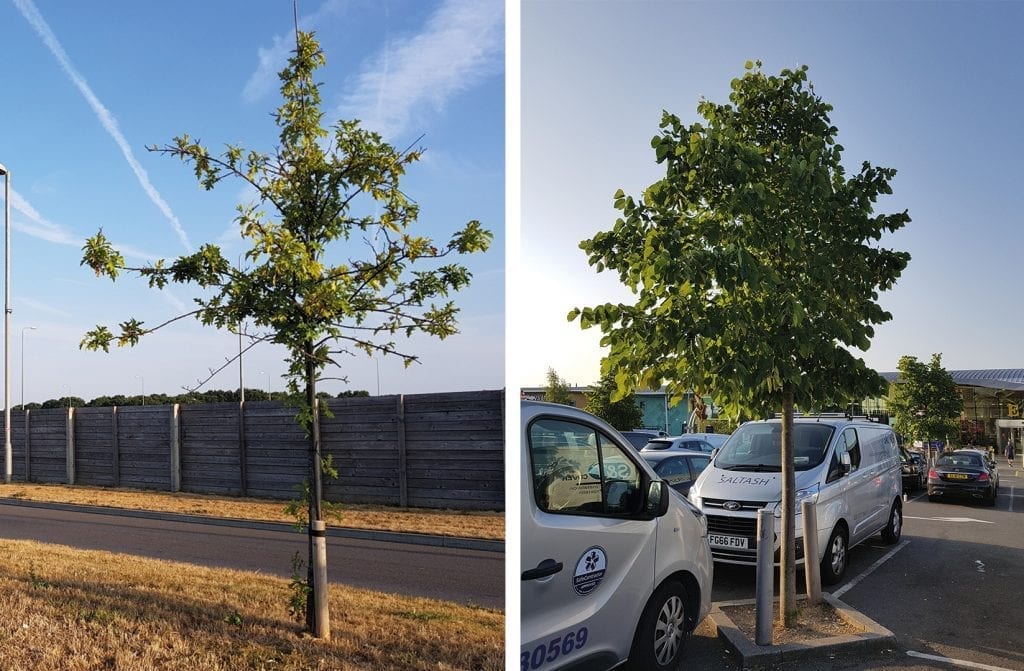
Even though microclimate temperatures with reflected heat from paving would have been more severe in the parking zones, the trees had clearly benefited from higher moisture levels and a cooler rhizosphere by establishing a deeper rooting pattern beneath the hard surfaces.
The trees in hardsacpe clearly benefited from higher moisture levels and a cooler rhizosphere by establishing a deeper rooting pattern
Soft landscape planting, whilst shading the surface is also a competitor for water, and with grass this is particularly acute, leading to tree failure in hot summers.
Whilst counter-intuitive, the trees in hard surfaces at Cobham are far more resilient in hot summers, benefiting service area users by providing canopy shade as well as the many other benefits that healthy trees offer.
Hadlow College Field Trials
The hypothesis that deeper rooted trees have a greater drought tolerance than surface rooted trees of the same variety was similarly confirmed by recent studies undertaken by the University of Greenwich, at their tests site in Hadlow.
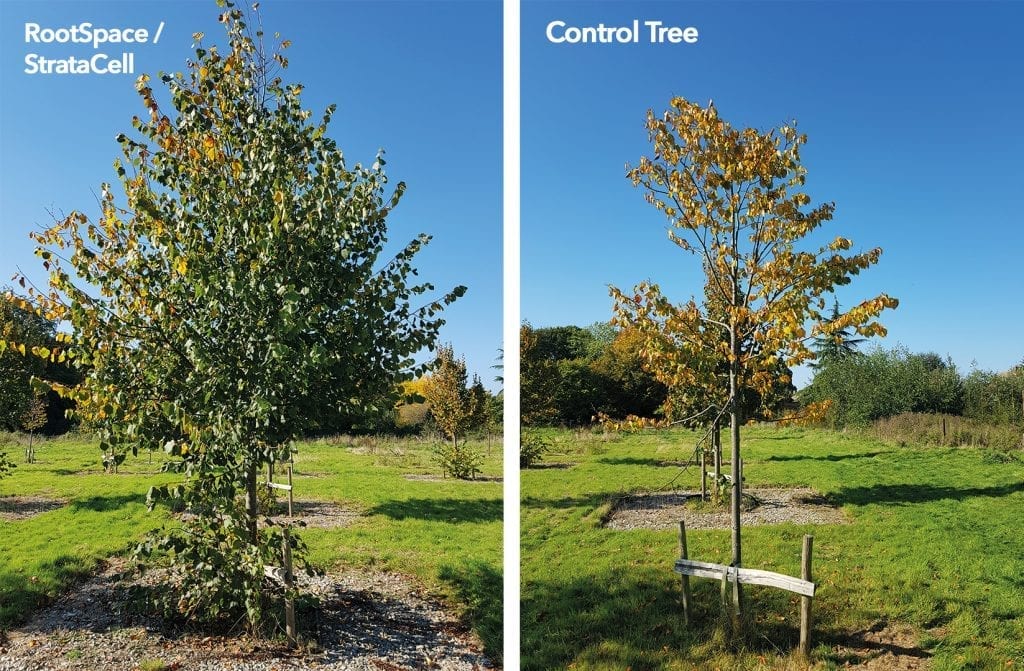
Again, the difference in canopy growth, DBH measurement and new shoot extension between trees in below ground soil cells, and those without was very significant.
In addition to the above ground observations, we were able to study the root growth by means of a root radar survey which demonstrated how the roots had established at a lower profile in a soil cell installation than in a field control comparison.
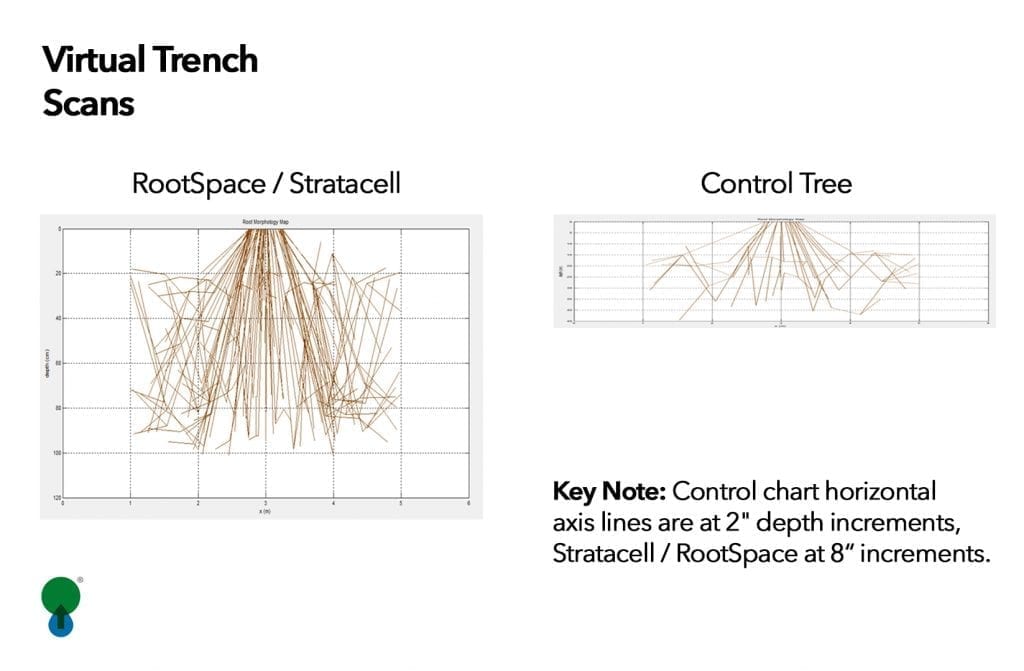
Standard RootSpace Tree Pit
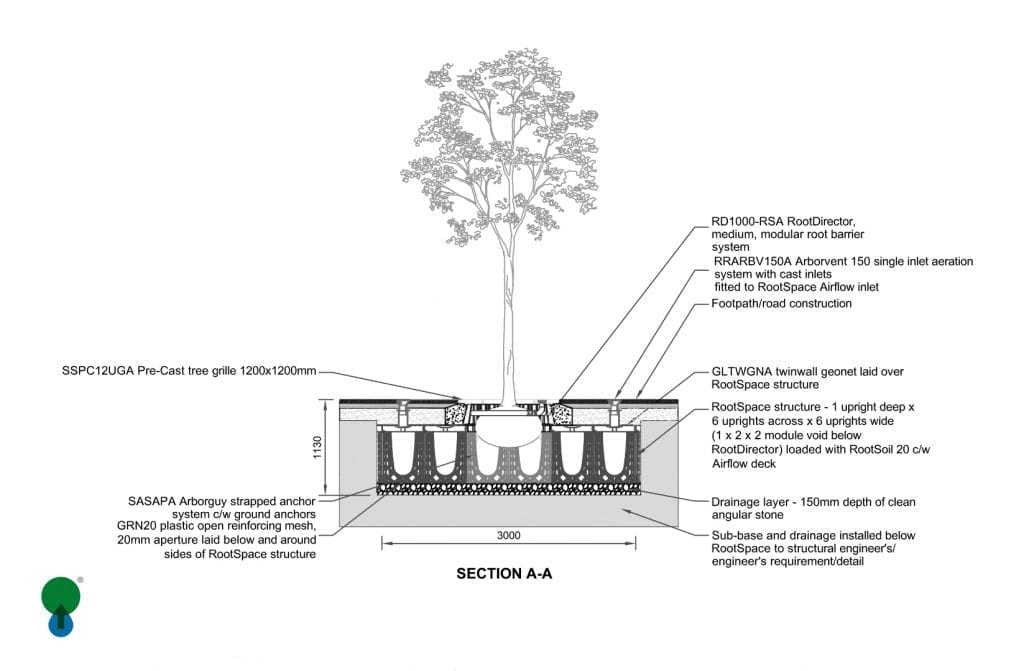
Design Note:
A shallow root director guides the new roots downwards into the cooler RootSpace soil zone below the pavement surface.
Notice the RootSpace structure has an air deck to enhance soil aeration which is an important feature for root zone health, with two air vents to the surface. These allow both water and air into the root zone for irrigation and gaseous exchange in the root zone.
